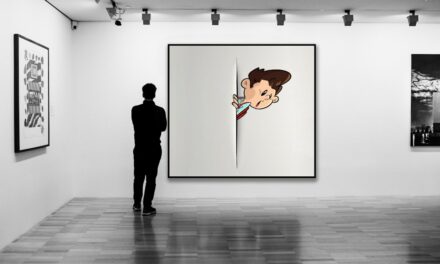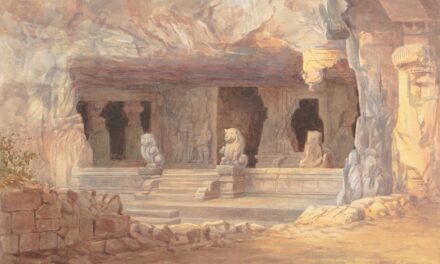The early life of an artist often serves as a foundation for their creative journey, and this is certainly true for many renowned figures in the art world. Born into a modest family, the artist’s formative years were marked by a profound curiosity and an innate talent for drawing. Growing up in a culturally rich environment, they were exposed to various artistic influences from an early age.
Their parents, recognising their child’s burgeoning talent, encouraged them to explore the world of art. This nurturing environment allowed the young artist to experiment with different mediums and styles, laying the groundwork for their future endeavours. Education played a pivotal role in shaping the artist’s skills and vision.
They attended a prestigious art school, where they honed their technical abilities and developed a deeper understanding of art history. The curriculum was rigorous, encompassing classical techniques as well as contemporary practices. It was during this time that the artist began to forge their unique voice, drawing inspiration from both traditional masters and modern innovators.
The combination of formal training and personal exploration equipped them with the tools necessary to navigate the complexities of the art world.
Summary
- Early Life and Education: The artist was born and raised in a small town in the countryside, where they developed a love for nature and the outdoors from a young age. They later pursued formal art education at a prestigious art school in the city.
- Rise to Prominence: After years of hard work and dedication, the artist gained recognition for their unique style and innovative approach to art. Their work began to attract attention from art critics and collectors, leading to numerous exhibitions and opportunities for collaboration.
- Artistic Style and Influences: The artist’s style is characterised by bold colours, dynamic compositions, and a focus on capturing the beauty of everyday life. They draw inspiration from a diverse range of influences, including traditional techniques and contemporary trends.
- Notable Works and Commissions: Some of the artist’s most celebrated works include large-scale murals in public spaces, as well as intimate portraits and still life paintings. They have also been commissioned to create artwork for prominent institutions and private collectors.
- Personal Life and Legacy: Despite their success, the artist remains humble and dedicated to their craft. They are known for their philanthropy and commitment to supporting emerging artists. Their legacy continues to inspire future generations of creatives.
- Impact on the Art World: The artist’s contributions have had a profound impact on the art world, challenging conventions and pushing boundaries. They have sparked important conversations about the role of art in society and the power of creativity to effect change.
- Recognition and Honors: Throughout their career, the artist has received numerous accolades and honours for their outstanding contributions to the arts. Their work has been celebrated in major publications and exhibitions around the world.
- Contemporary Relevance: Today, the artist’s work remains as relevant and influential as ever, continuing to captivate audiences and inspire new generations of artists. Their commitment to innovation and social engagement ensures their enduring impact on the art world.
Rise to Prominence
The journey from obscurity to prominence is often fraught with challenges, yet it is also a testament to an artist’s resilience and dedication. After completing their education, the artist faced the daunting task of establishing themselves in a competitive landscape. Initially, they participated in local exhibitions, showcasing their work to a small but appreciative audience.
These early shows provided invaluable experience and feedback, allowing them to refine their style and approach. As word of their talent began to spread, the artist caught the attention of influential critics and collectors. Their breakthrough moment came when they were invited to exhibit at a prestigious gallery, where their work resonated with a broader audience.
This exposure marked a turning point in their career, leading to increased recognition and opportunities for collaboration. The artist’s unique perspective and innovative techniques set them apart from their contemporaries, propelling them into the spotlight and solidifying their status as a rising star in the art world.
Artistic Style and Influences
An artist’s style is often a reflection of their experiences, influences, and personal philosophy. The artist in question developed a distinctive aesthetic characterised by bold colours, dynamic compositions, and an exploration of themes such as identity and human emotion. Their work often blurs the lines between abstraction and representation, inviting viewers to engage with the pieces on multiple levels.
This innovative approach not only captivates audiences but also challenges conventional notions of what art can be. Influences on the artist’s style are diverse and multifaceted. They draw inspiration from a range of sources, including historical movements such as Impressionism and Expressionism, as well as contemporary artists who push the boundaries of traditional practices.
Additionally, personal experiences and cultural heritage play a significant role in shaping their artistic vision. The artist’s ability to synthesise these influences into a cohesive body of work speaks to their skill and creativity, allowing them to carve out a unique niche within the art community.
Notable Works and Commissions
Throughout their career, the artist has produced a remarkable body of work that showcases their evolution as an artist. Among their notable pieces are several large-scale installations that challenge viewers’ perceptions of space and form. These works often incorporate mixed media elements, blending painting, sculpture, and digital technology to create immersive experiences.
Each piece invites contemplation and dialogue, encouraging audiences to engage with the themes presented. In addition to personal projects, the artist has received numerous high-profile commissions that further demonstrate their versatility and appeal. Collaborating with institutions such as museums and public galleries, they have created site-specific works that resonate with the surrounding environment.
These commissions not only highlight the artist’s technical prowess but also their ability to connect with diverse audiences. Each project serves as a testament to their commitment to pushing artistic boundaries while remaining accessible to the public.
Personal Life and Legacy
The personal life of an artist often intertwines with their creative output, influencing both their work and legacy. The artist has navigated various challenges throughout their journey, including periods of self-doubt and external criticism. However, these experiences have ultimately enriched their artistic practice, allowing them to explore deeper themes within their work.
Their resilience in the face of adversity serves as an inspiration to aspiring artists who may encounter similar obstacles. As they continue to create and innovate, the artist’s legacy is already taking shape. Their contributions to contemporary art have sparked conversations about identity, culture, and the role of art in society.
By mentoring emerging artists and engaging in community outreach initiatives, they are committed to fostering a new generation of creatives. This dedication not only ensures that their influence will endure but also highlights the importance of collaboration and support within the artistic community.
Impact on the Art World
The impact of an artist on the broader art world can be profound, shaping trends and inspiring future generations. The artist’s work has challenged established norms, encouraging both critics and audiences to reconsider preconceived notions about art’s purpose and function. Their innovative techniques have inspired countless artists to experiment with new materials and approaches, fostering a spirit of exploration within the community.
Moreover, the artist’s engagement with social issues has elevated their work beyond mere aesthetics. By addressing themes such as identity politics, environmental concerns, and cultural heritage, they have positioned themselves as a voice for change within the art world. This commitment to social commentary not only enriches their own practice but also encourages others to use art as a platform for advocacy and dialogue.
Recognition and Honors
Recognition within the art world often comes in various forms, from critical acclaim to prestigious awards. The artist has received numerous accolades throughout their career, reflecting both their talent and dedication to their craft. These honours serve not only as validation of their work but also as a means of elevating their profile within the industry.
In addition to awards, the artist has been featured in prominent exhibitions both nationally and internationally. These showcases provide opportunities for broader audiences to engage with their work while solidifying their reputation as a leading figure in contemporary art. Such recognition is not merely an endpoint; rather, it acts as a catalyst for further exploration and innovation in their artistic journey.
Contemporary Relevance
In an ever-evolving art landscape, the relevance of an artist’s work can fluctuate over time. However, the themes explored by this particular artist resonate strongly within contemporary discourse. Issues such as identity, social justice, and environmental sustainability are increasingly pertinent in today’s society, making their work all the more significant.
As new generations of artists emerge, they often look to established figures for inspiration and guidance. The artist’s commitment to pushing boundaries while remaining grounded in social issues serves as a model for aspiring creatives navigating similar challenges. By continuing to engage with contemporary themes through their work, they ensure that their contributions remain relevant and impactful in an ever-changing world.
In conclusion, the journey of this artist from humble beginnings to prominence is a testament to their talent, resilience, and dedication to their craft. Their unique artistic style, notable works, and commitment to social issues have left an indelible mark on the art world. As they continue to inspire future generations through mentorship and advocacy, their legacy will undoubtedly endure for years to come.
If you are interested in exploring different forms of art, you may also enjoy reading about how chalk art on sidewalks is encouraging outdoor creativity. This article discusses how artists are using public spaces to create beautiful and temporary works of art that inspire passersby. You can find more information on this topic here.
FAQs
Who is Lavinia Fontana?
Lavinia Fontana was an Italian painter from the late 16th century, known for being one of the first female artists to gain international recognition.
What is Lavinia Fontana known for?
Lavinia Fontana is known for her portraits and religious paintings, as well as being a pioneering female artist in a male-dominated field.
What was Lavinia Fontana’s style of painting?
Lavinia Fontana’s style of painting was influenced by the Mannerist and Renaissance styles, characterized by attention to detail, vibrant colors, and a focus on the human form.
What are some notable works by Lavinia Fontana?
Some notable works by Lavinia Fontana include “Portrait of a Noblewoman,” “Noli me tangere,” and “Holy Family with St. Catherine.”
What impact did Lavinia Fontana have on the art world?
Lavinia Fontana’s success as a female artist in a male-dominated field paved the way for future generations of women artists. She also gained international recognition during her lifetime, breaking barriers for female artists in the art world.



